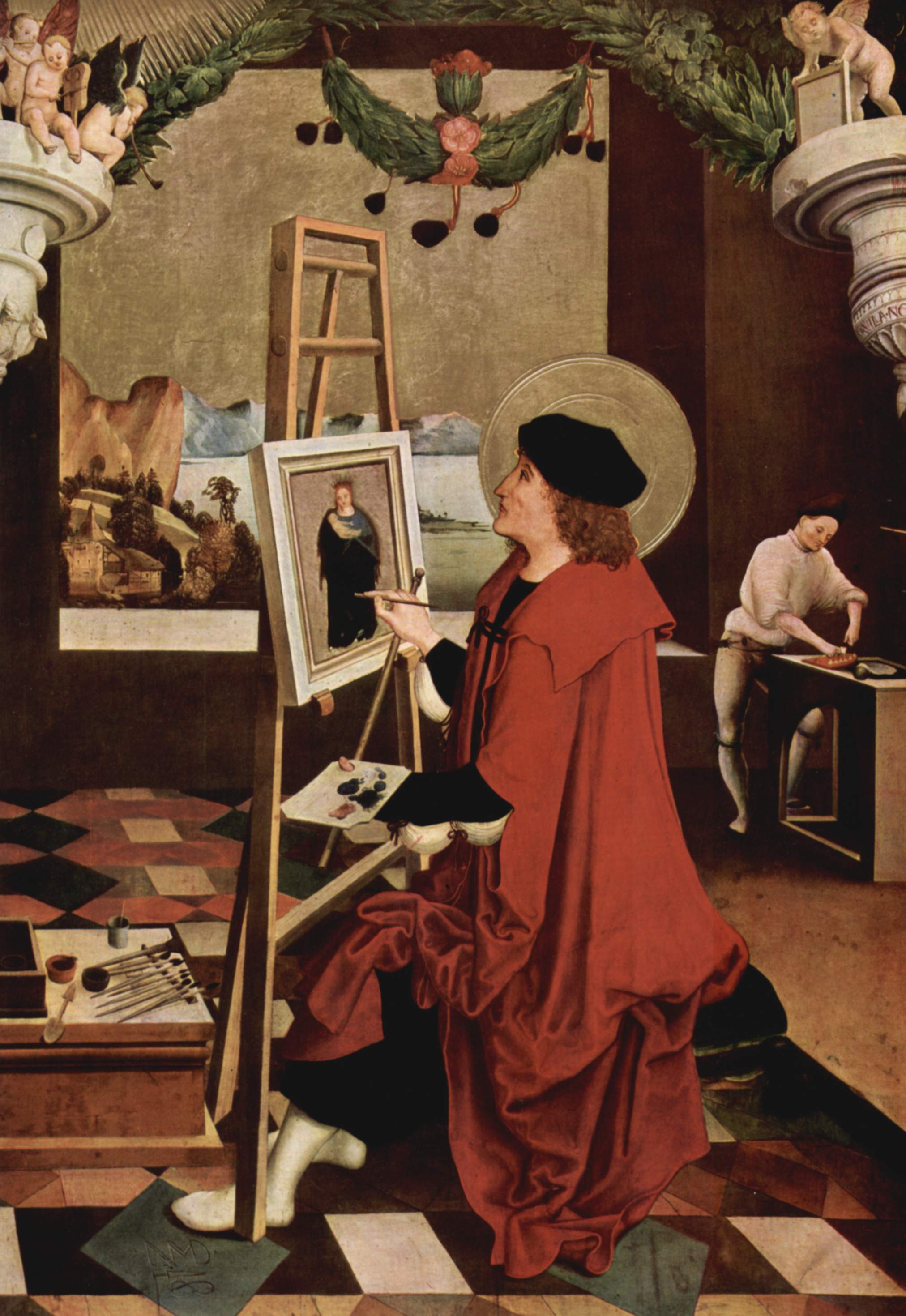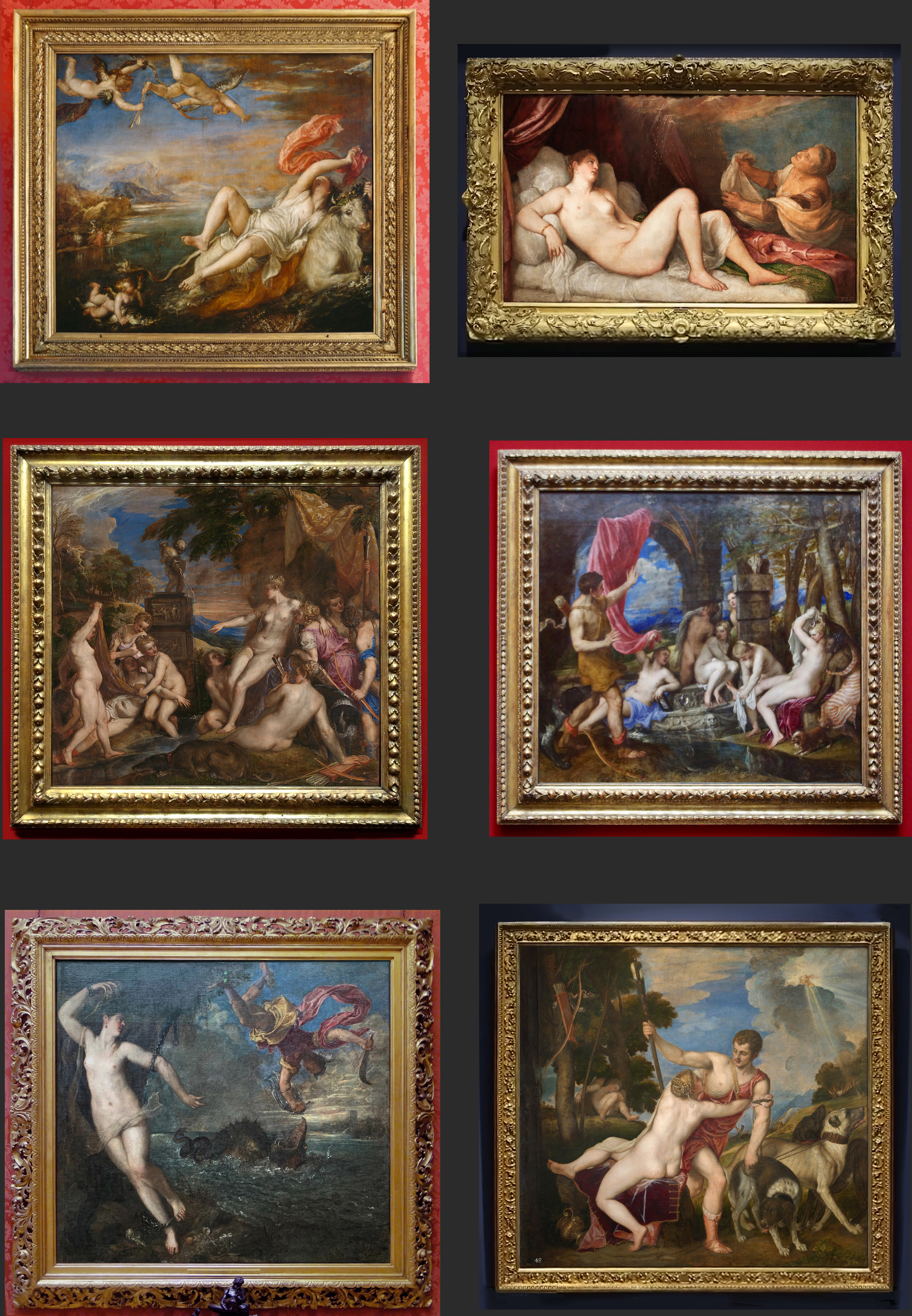How we look at art: Frames and framing – a video
This is the video of an online discussion which took place on 7 October 2020, as part of London Art Week.
Matthew Reeves, a director at Sam Fogg, and Peter Schade, Head of the National Gallery’s Framing Department, consider the importance of frames in the presentation of paintings from the late 15th and early 16th centuries – a period crucial to the development of picture frames as we know them. They discuss the ways in which frames from this period help us to read the imagery they contain, occasions when they could be exploited for dramatic effect, and how they might reveal or conceal aspects of paintings as part of a physical – an almost theatrical – process of viewing and handling.
(It’s 1 hour 21 minutes long, including a short interval for questions at the end).
Some of the paintings and frames discussed are included below, with relevant links.
Niklaus Manuel Deutsch (1484-1530), St Luke painting the Virgin, 1515, 117 x 82 cm., Kunstmuseum, Berne
‘St Luke, who’s painting the Virgin, is doing so on a prepared panel that is already framed, and this was the norm. What we think of today, where a painter produces a painting in a studio and then frames it, was not, fundamentally not, how paintings tended to be made at this early date.’
Giovanni Bellini (1434/39-1516), San Giobbe altarpiece, c.1487, photographic reconstruction of the original appearance of the painting in its frame in situ in the church of San Giobbe, Venice
‘There are other paintings of this period in all’ antica frames where the space relates to the outer frame, like the Bellini in the Frari Church or the Mantegna San Zeno altarpiece, but this is the one where the frame and the painting are in complete unison……’[1]
Bellini, San Giobbe altarpiece, c.1487, now separated from its frame in the Gallerie d’Academia, Venice
‘The painting out of the context of its original frame [is] just a fragment.’
Hans Memling (c.1430/40-94), Christ blessing, 1481, o/panel, 13 13/16 x 9 7/8 ins (35.1 x 25.1 cm.), MFA, Boston
‘…its frame is original; it’s dated, and it becomes so important when you consider the action that Christ has in it. Without its frame, Christ’s fingertips seem lost… as soon as you put it into its sill frame – or, rather, as soon as you stop divorcing it from its sill frame – you see that actually He is standing just the other side of a parapet or a wall, and He is inviting this conversation about physical proximity through an architectural surround with us.’
Mantegna (c.1431-1506), Samson & Delilah, c.1500, glue size on canvas, 47 x 36.8 cm., National Gallery, in previous frame
‘…the Mantegna Samson and Delilah… previously framed… in a typical 1950s-70s frame: it treats the painting like a drawing… it really looks like a drawing, whereas … Mantegna wants to give us the illusion of a piece of carved marble…
Mantegna, Samson & Delilah, c.1500, reframed in a contemporary Italian walnut frame, and detail
‘This is the most beautiful early 16th – maybe late 15th century – walnut moulding… there’s an innermost edge that’s got a leaf carved on it, but the leaf is incised in a way that you really only see on stone carving… It is wood carving in imitation of stone carving… this is really the perfect frame for a painting that’s imitating stone carving…’[2]
Also mentioned: Leonardo da Vinci, The Virgin of the Rocks; for the reframing of this painting, see ‘National Gallery frames: an interview with Peter Schade’…
…and for Sebastiano’s The raising of Lazarus, see ‘National Gallery, London: The reframing of Lazarus’.
Titian’s Poesie in their previous, disparate frames
‘Titian’s Poesie…the National Gallery’s exhibition at the moment – and as a fundamental part of that project, they were all reframed, and here we’re showing them all in the frames in which they were exhibited by their host institutions before… This is a discord and disunity…’
Titian’s Poesie reframed by the National Gallery for the exhibition, Titian: love, desire, death
‘..almost fifty metres of fully carved [moulding], several lines of ornament; really an extraordinary effort to go to for a temporary exhibition, but I think with a profound effect… When they come from different institutions it’s very hard to get a sense of them belonging together, and it was worth all the effort to create that. As a model we used what I think was the original frame for Titian’s Pietà at the Accademia in Venice…’[3]
Here is the National Gallery’s video on the making of these six great frames:
For Hélène Verougstraete’s work, the link to which is shown at the end of the London Art Week video, go to Frames and supports in 15th and 16th-century Southern Netherlandish painting…
…and for the second link, on Jan van Eyck’s paintings and their frames, go to VERONA: Van Eyck Research in Open Access.
**********************
[1] For Bellini, see also ‘National Gallery, London: reframing Bellini’
[2] For Mantegna, see also ‘National Gallery, London: reframing Mantegna’
[3] For more on Titian, see ‘Framing Titian’s poesie’. See also ‘Reasons for reframing: focusing on Titian’, for the last painting in the poesie series, The death of Actaeon – the one which stayed in the artist’s studio and was never sent, like the others, to Philip II of Spain










